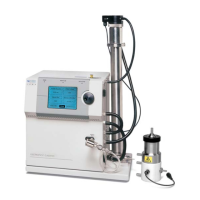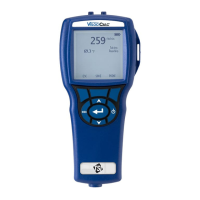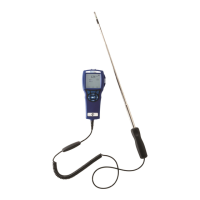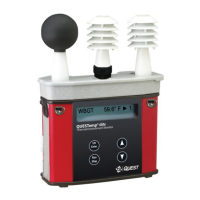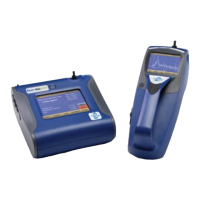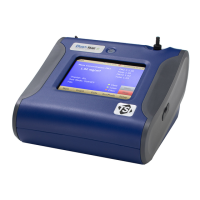Do you have a question about the TSI Instruments 3936 and is the answer not in the manual?
| Flow Rate | 1.0 L/min |
|---|---|
| Power | 100 to 240 VAC, 50/60 Hz |
| Size Range | 0.01 to 1.0 µm |
| Operating Temperature | 10 to 40 °C (50 to 104 °F) |
| Storage Temperature | -20 to 60 °C (-4 to 140 °F) |
Precautions for safe operation of laser components within the SMPS system.
Guidelines for safe handling of high-voltage components in the SMPS.
Safety measures when using chemicals like n-butyl alcohol with the SMPS.
Precautions related to the Kr-85 source in the aerosol neutralizer.
Information on advisory and identification labels attached to SMPS components.
Explains the objective of the SMPS installation and operations manual.
Lists other TSI manuals useful for SMPS operation and setup.
Instructions on how to provide feedback or report errors in the manual.
Overview of the SMPS system, its function, and measurement range.
Explains the electrical mobility detection technique and system automation.
Details the components included with the SMPS system based on model configuration.
Guidance on safely unpacking and handling SMPS system components.
Information for making power and system cabling connections.
Sequence for applying power to the SMPS instruments during setup.
Discussion of underpressure and overpressure modes of operation.
Procedures for connecting various CPC models to the classifier.
Pre-operation checks and settings for the SMPS spectrometer.
Understanding flow rate settings for optimal SMPS performance.
Using the impactor to measure flow rate based on pressure drop.
Procedures for setting CPC flow rates in different operating modes.
Verifying system integrity and laminar airflow before operation.
Periodic cleaning and replacement schedules for SMPS components.
Solutions for common SMPS problems and leak checking procedures.
Procedures to check the SMPS plumbing system for leaks.
Information on contacting TSI for technical support and service.
Instructions for returning the SMPS spectrometer for repair or service.
Technical specifications for the SMPS Spectrometer system components.
Explains the SMPS theory of operation and key instruments.
Provides historical context for SMPS and DMA development.
Describes the principle of particle removal by inertial impaction.
Explains the function of the classifier in particle size fractionation.
Details the models used for particle charge distribution.
Explains how particle electrical mobility relates to size.
Explains the mechanism of particle growth and detection in CPCs.
Details the Kelvin equation and saturation ratio in CPC operation.
Describes how particles are detected and counted by the CPC.
Discusses challenges and corrections for high particle concentrations.
Outlines how the SMPS system collects and processes data.

